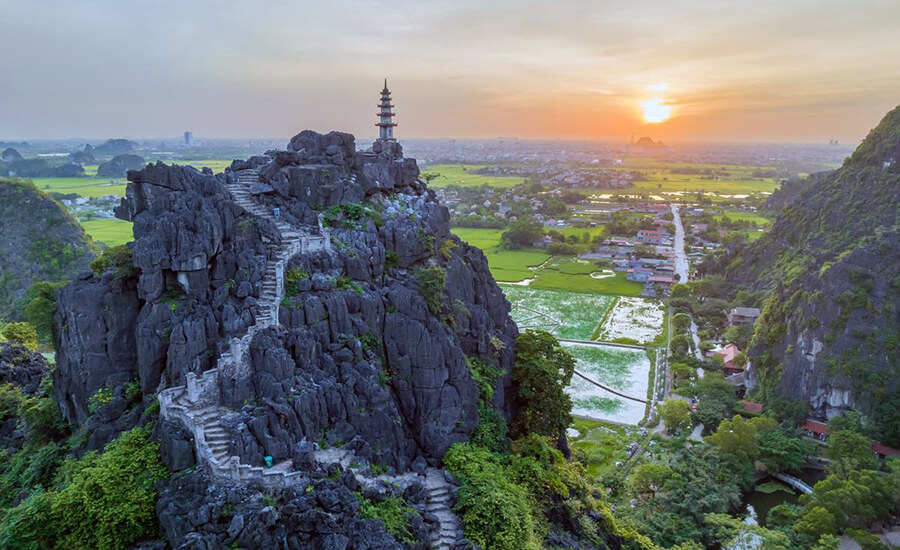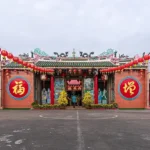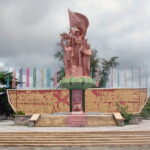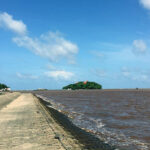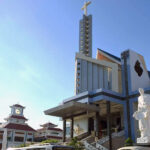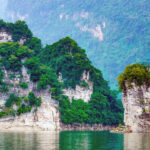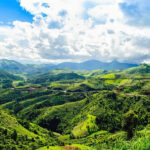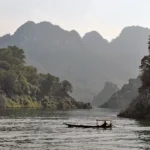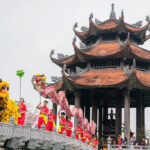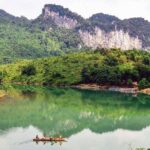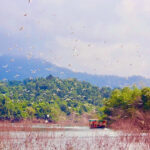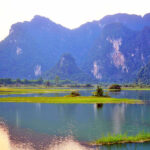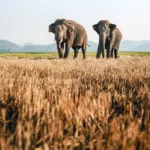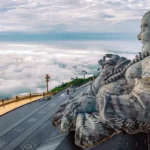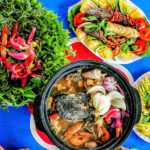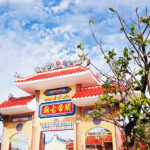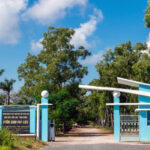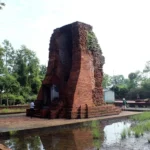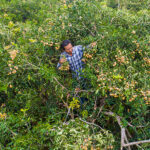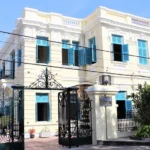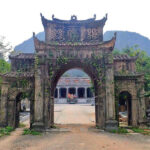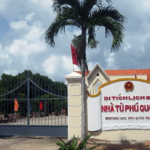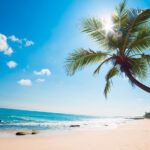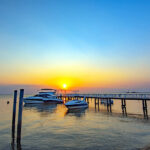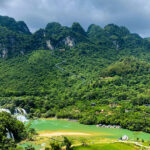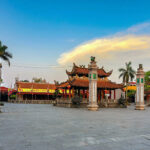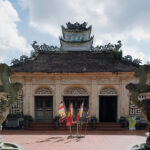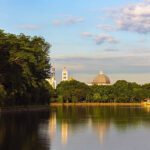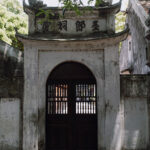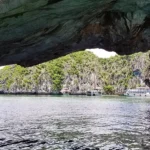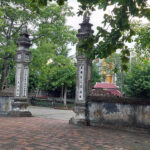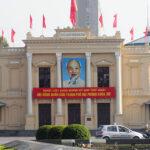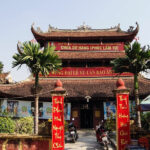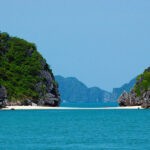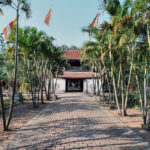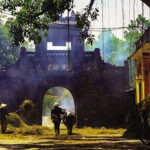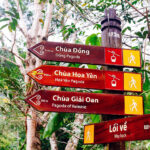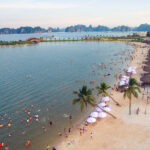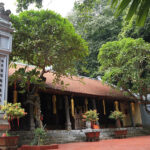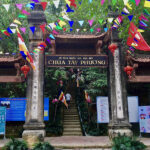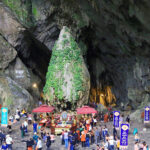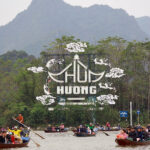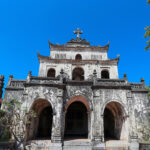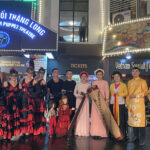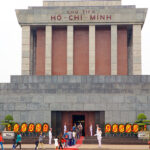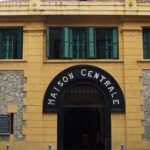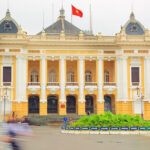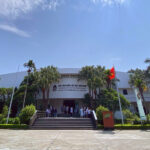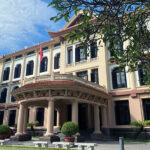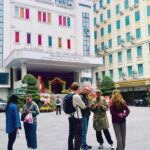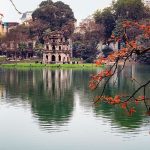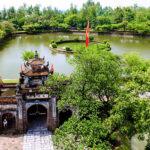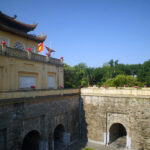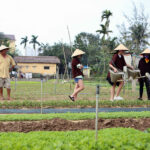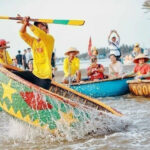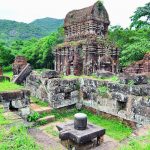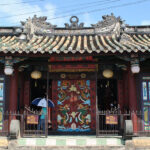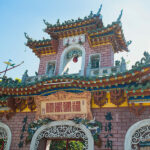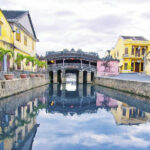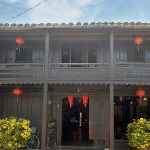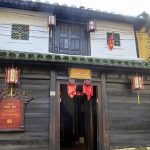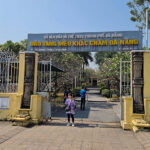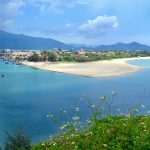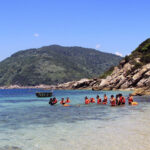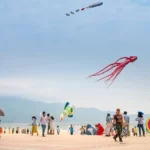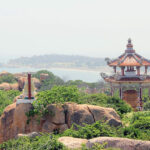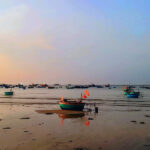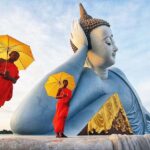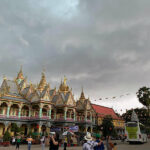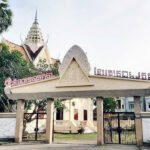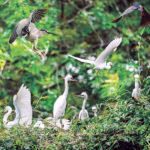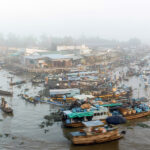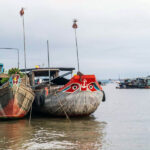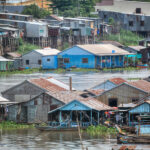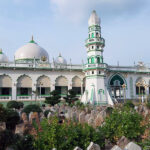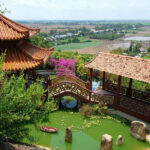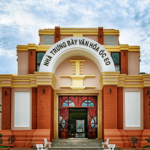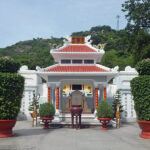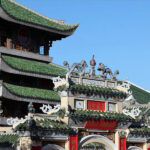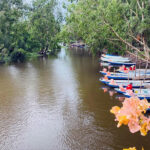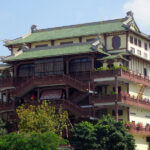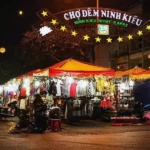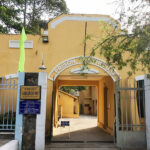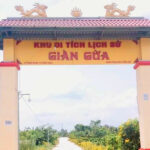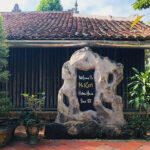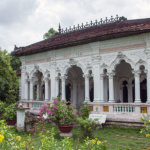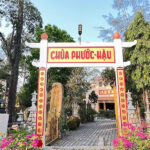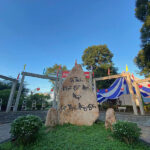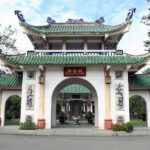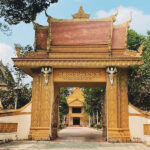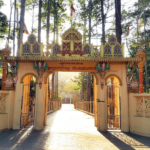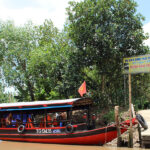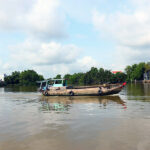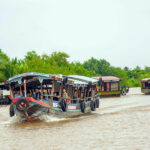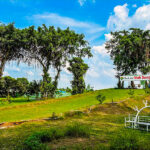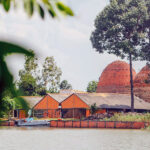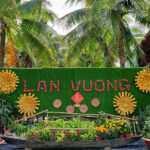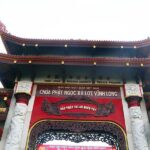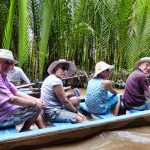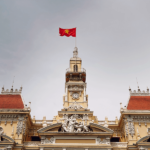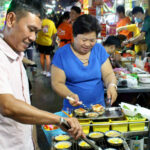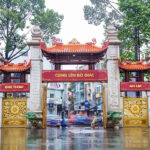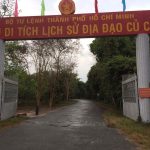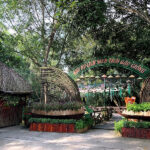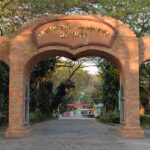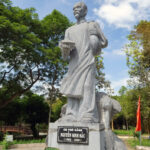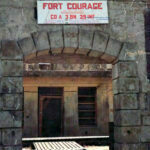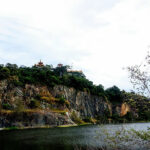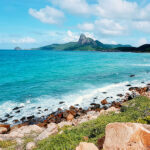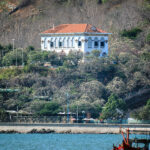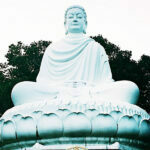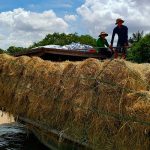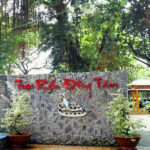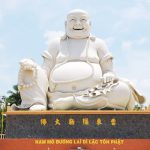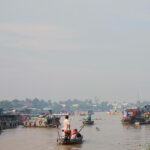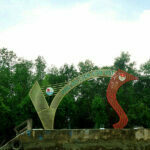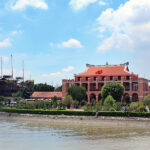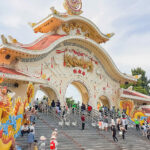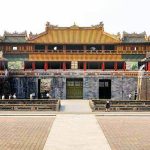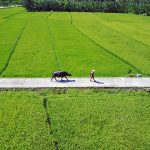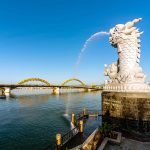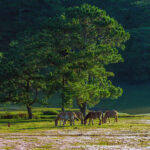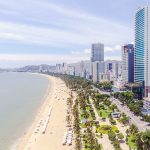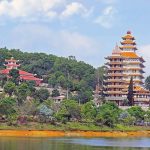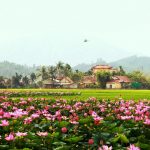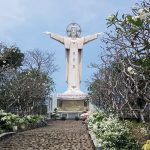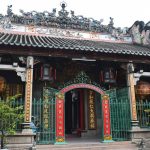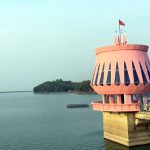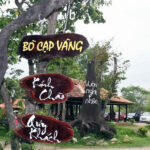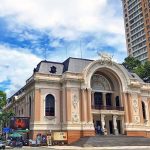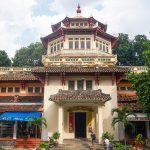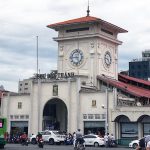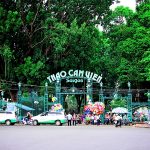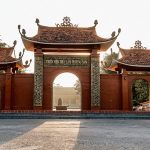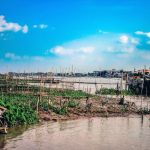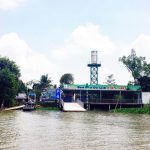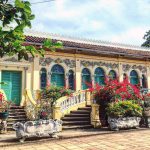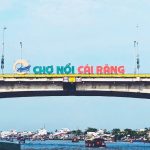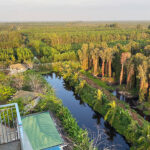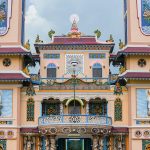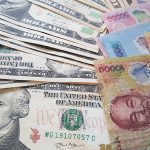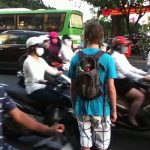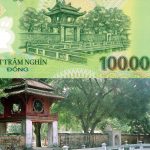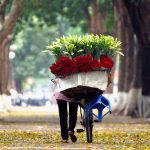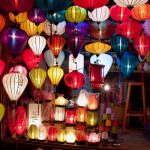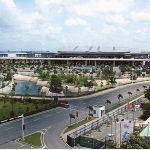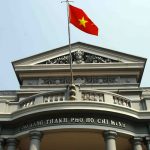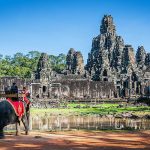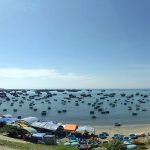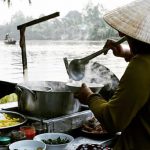Ninh Binh tourist destinations are blessed by nature with beautiful, majestic and poetic natural landscapes, along with a long history and culture. Just about 100 km from Hanoi, this is a suitable choice for tourists who do not have much time but want to explore the beautiful nature in North Vietnam. Let’s take a look at the following content with Vietdreamtravel to discover more about some famous places when traveling to Ninh Binh!
General information about Ninh Binh
Table of Contents
Ninh Binh is a province located at the southern gateway of the capital Hanoi and belongs to the Red River Delta region, Northern Vietnam. After the merger in 2025, Ninh Binh province merged with Ha Nam and Nam Dinh provinces, forming a single province named Ninh Binh, with an area of about 3,942.62 km².
Ninh Binh has the following geographical location:
- To the East, it borders Hung Yen province by the Red River,
- To the West, it borders Thanh Hoa province with the boundary being the Tam Diep Mountain Range and Can River,
- To the South, it borders the East Sea (Gulf of Tonkin) with a coastline of 92 km,
- To the North, it borders the capital Hanoi and Phu Tho province.
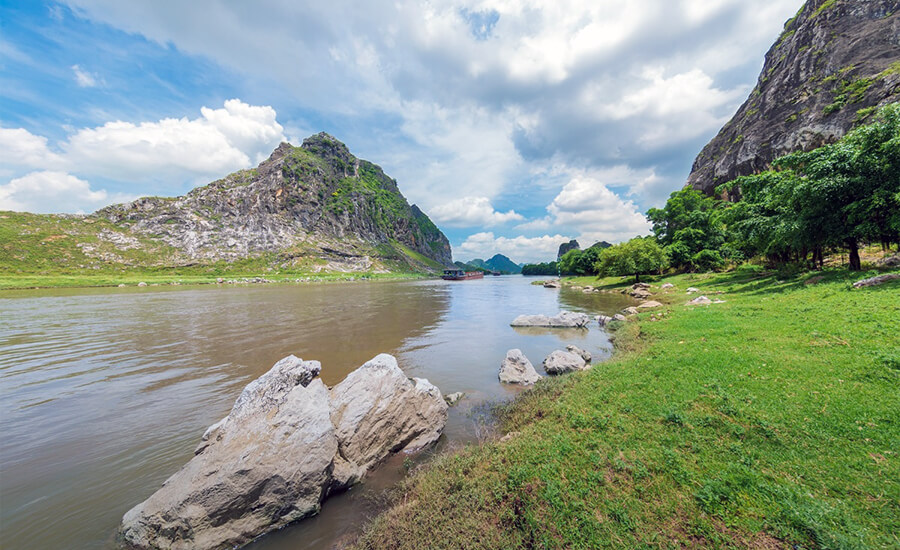
Kem Trong – Ninh Binh (photo source: collected).
This is also an important military area throughout historical periods. With a special location in terms of traffic, terrain, cultural history, and possessing the Trang An World Heritage Complex and other titles awarded by UNESCO such as: Red River Delta Biosphere Reserve, Mother Goddess worship, Cheo art,… Ninh Binh is a tourist center with rich and diverse potential.
What’s the best time to explore Ninh Binh?
Ninh Binh is located in a humid subtropical region with a tropical monsoon climate, with an average temperature of 23.5 degrees Celsius. There are four distinct seasons: spring, summer, autumn and winter; characterized by cold, dry winters and hot, humid summers with lots of rain.

Spring time: From January to March, Ninh Binh attracts visitors with a cool climate, not too cold, little rain, convenient for sightseeing and activities. This time is also ideal for spring travel with spiritual tourism activities such as visiting Bai Dinh Pagoda, Trang An, Tran temple and the Phat Diem Church.

Summer time: From April to June, Ninh Binh’s weather is usually quite cool and pleasant, not too cold but not too hot. Summer is the time for open scenery, plants grow well so you will have the opportunity to admire the beauty of golden rice fields in Tam Coc or the diverse ecosystem of Cuc Phuong forest. With the bright sunlight will be the opportunity for you to take beautiful and artistic photos.
In addition, summer is suitable for swimming. The islets in Ninh Binh sea area are located very close to the river mouths including: Lu, Ngan, Xanh, Noi and Mo.
How to get here?
Ninh Binh is an important traffic junction, with 9 national highways with a convenient highway system. If you go from Hanoi, road vehicles such as motorbikes, cars, tourist bus are the best choice.
By roadway
If traveling by personal vehicle, from Hanoi, visitors follow Giai Phong Street, pass Giap Bat bus station, turn onto Phap Van – Cau Gie highway, from there go towards Phu Ly to Ninh Binh in about 2 hours.

If you want to rest and sightsee, from Ninh Binh travel experience, you can choose private cars or taxi.
For tourist buses, you can buy tickets at Giap Bat and My Dinh bus stations, with many different departure times. Ticket prices range from 60,000 – 150,000 VND/person.
For limousines and VIP bus from 9 to 11 seats, you can proactively choose your pick-up and drop-off locations with many bus companies such as Duy Khang Limousine, Trang An Limousine with many attractive promotions.
By airplane
If departing from Ho Chi Minh City, visitors fly to Hanoi and take a bus to Ninh Binh with the above options. Vietnamese airlines such as Vietnam Airlines, Vietjet Air, Bamboo, all operate flights from Ho Chi Minh City to Hanoi. Currently, ticket prices range from 1,500,000 – 3,000,000 million VND/way.
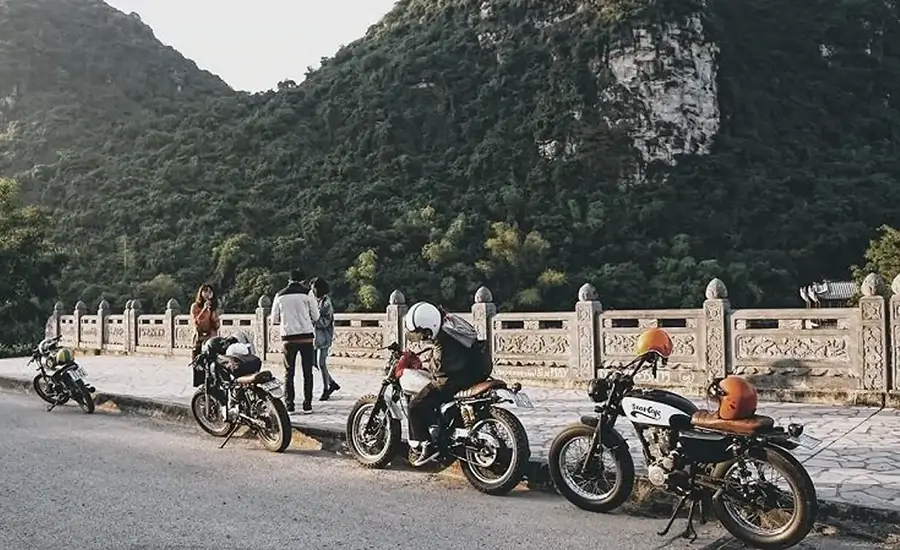
By railroad
In addition, visitors from other provinces can go to Ninh Binh by train. There are 3 main train stations in Ninh Binh include: Nam Dinh, Phu Ly and Ninh Binh. The website of the Railway Corporation (http://dsvn.vn) allows pre-booking tickets or visitors can buy them at the stations.
Traveling within the city, visitors should rent a motorbike for 100,000 – 150,000 VND/day to be proactive because the tourist attractions in Ninh Binh are quite far apart. If traveling in a large group, visitors should call a taxi to save costs.
Accommodation in Ninh Binh
Tourists coming to Ninh Binh as couples, in groups of friends or alone can choose to stay at homestays near tourist attractions with green, peaceful spaces and friendly services. Some popular and conveniently located addresses are: Ninh Binh Friendly Homestay, Hang Mua Ecolodge, Diep’s House, Ninh Binh Palm Homestay, ChezBeo Homestay… With a cost of about 200,000 VND/person/night.
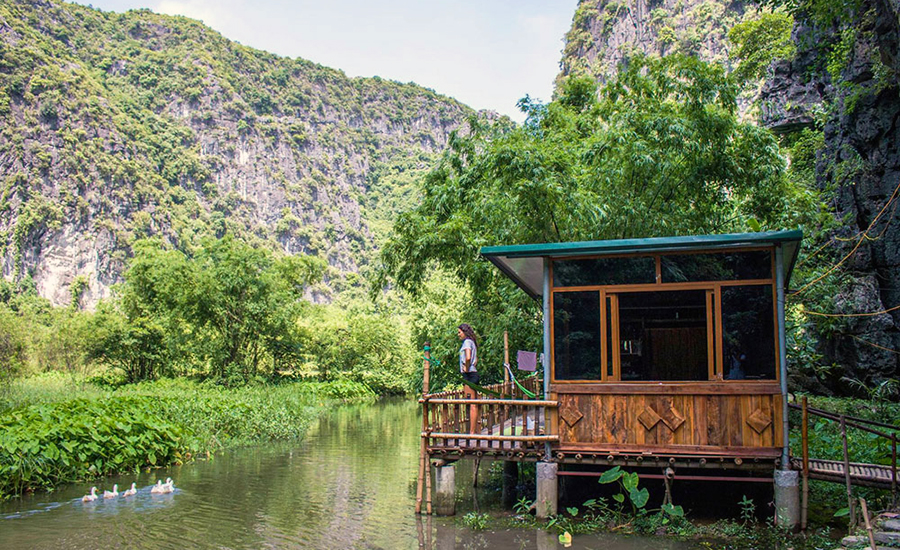
To enjoy more luxurious services and amenities such as swimming pools, spas, gyms, bars… visitors can choose 4-5 star quality resorts such as Emeralda Resort Ninh Binh, Tam Coc Garden Resort, Ninh Binh Hidden Charm Hotel And Resort, An’s Eco Garden Resort, Aravinda Resort Ninh Binh… Room rates range from 1.7 – 6 million VND/night.
In old Nam Dinh area, tourists can stay overnight at hotels in the center such as Vi Hoang or in the suburbs such as Nam Cuong, Ecohost homestay….
Tourist attractions in Ninh Binh
Famous historical and cultural relics
Hoa Lu Ancient Capital

In 968, Dinh Bo Linh ascended to the throne and took the name of King Dinh Tien Hoang. The country was then called Dai Co Viet and Hoa Lu was its capital for 41 years (968-1009), through 3 dynasties Dinh – Early Le – Early Ly. In 1010, Ly Thai To moved the capital from Hoa Lu to Thang Long.
The Hoa Lu Ancient Capital is located in Tay Hoa Lu ward. Tourist visiting Hoa Lu can see two temple located 500m apart from each other on the ground of the ancient palaces. One is dedicated to King Dinh Tien Hoang and the other to King Le Dai Hanh. On the 10th day of the 3rd lunar month, a great number of pilgrims come to Hoa Lu to pay tribute to Kings Dinh and Le.
The capital is one of the four core areas of the Trang An World Heritage Complex recognized by UNESCO. Visitors should register to listen to the commentary during the tour to better understand the historical value of this place. The entrance fee is 20,000 VND per person.
Tran Temple
 Tran Temple is a temple complex located on Tran Thua Street, Nam Dinh Ward. The Tran Temple relic site was built in 1695. This is a place to worship 14 emperors, their families and mandarins who contributed to the Tran Dynasty.
Tran Temple is a temple complex located on Tran Thua Street, Nam Dinh Ward. The Tran Temple relic site was built in 1695. This is a place to worship 14 emperors, their families and mandarins who contributed to the Tran Dynasty.
The Tran Temple relic site includes 3 main areas: Co Trach Temple, Thien Truong Temple and Trung Hoa Temple. All three temples have the same architecture and are of equal scale. Each temple consists of a 5-room front hall, a 5-room middle hall, and a 3-room main hall. Connecting the front hall and the middle hall is the altar (incense burning area) and 2 rooms on the left and right.
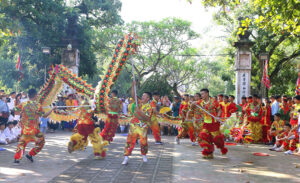 Thien Truong Temple is located right in the center of the temple, this is where the altars of mandarins who contributed to the country placed. Co Trach Temple houses the memorial tablet of General Tran Hung Dao, his family and generals. Trung Hoa Temple was built in the west of the temple. In the temple, there are 14 statues of 14 emperors of the Tran Dynasty.
Thien Truong Temple is located right in the center of the temple, this is where the altars of mandarins who contributed to the country placed. Co Trach Temple houses the memorial tablet of General Tran Hung Dao, his family and generals. Trung Hoa Temple was built in the west of the temple. In the temple, there are 14 statues of 14 emperors of the Tran Dynasty.
Today, this is a place of worship for pilgrims and tourists from all over the country. At Tran Temple in Nam Dinh, there are two major festivals held every year: the Tran Temple Festival, which usually takes place from the 15th to the 20th of the 8th lunar month, and the Spring Opening Ceremony, which takes place from the 14th to the 15th of the 1st lunar month.
Nam Dinh Textile Museum
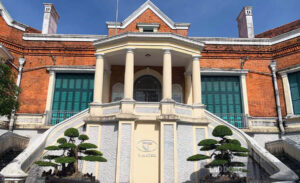 Nam Dinh Textile Museum is located on Hoang Hoa Tham Street, Nam Din ward is also a destination for tourists who love to explore history. This place was built in the traditional ancient house architecture, belonging to Nam Dinh Textile Factory Joint Stock Company. This is where artifacts and traditional values of the textile industry in ancient times are preserved.
Nam Dinh Textile Museum is located on Hoang Hoa Tham Street, Nam Din ward is also a destination for tourists who love to explore history. This place was built in the traditional ancient house architecture, belonging to Nam Dinh Textile Factory Joint Stock Company. This is where artifacts and traditional values of the textile industry in ancient times are preserved.
Since 1889, Nam Dinh Textile Factory has been one of the largest factories in Vietnam with 6,000 workers, this is the cradle that helped the working class at that time grow. The Textile Museum has an area of nearly 1.2 hectares, owning a classic French architectural style, inside today is divided into many exhibition spaces with different themes. Coming here, you will admire the fabric and clothing products of Vietnam, but the sewing machines and weaving machines contributed to the glory of the country’s textile industry in the previous centuries.
Dong Que Museum
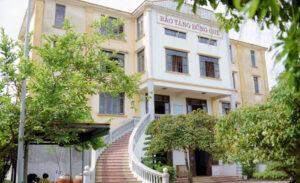 Located in Binh Di village, Giao Ninh commune, is the first “countryside” Museum in Vietnam. This private museum is over 5,000 square meters wide, recreating the image of the working and living life of people in the Northern Delta from the past to the present.
Located in Binh Di village, Giao Ninh commune, is the first “countryside” Museum in Vietnam. This private museum is over 5,000 square meters wide, recreating the image of the working and living life of people in the Northern Delta from the past to the present.
Coming Dong Que Museum, visitors will be able to visit ancient house models with tiled roofs, earthen walls… and visit gardens and fish ponds. This is also a place highly appreciated by many tourists, suitable for families with young children. You can order lunch at the museum and enjoy rustic, rural dishes of Nam Dinh such as gai cake, sticky rice, boiled chicken, boiled meat with soy sauce… The entrance fee is 5,000 VND per person.
Ecotourism areas and caves
Trang An
 This place attracts tourists with its majestic mountain scenery, winding small rivers, and wild valleys… The entrance fee to Trang An is 250,000 VND for adults and 100,000 VND for children under 1.4 m.
This place attracts tourists with its majestic mountain scenery, winding small rivers, and wild valleys… The entrance fee to Trang An is 250,000 VND for adults and 100,000 VND for children under 1.4 m.
Coming to Trang An, you can choose one of 3 boat tours to visit the caves, temples, palaces. Each tour lasts from 2 to 3 hours. Thanks to its pristine space, as beautiful as a watercolor painting, Trang An has been recognized by Unesco as a natural and cultural heritage of the world. Notably, this place was chosen by director Jordan Vogt Roberts as the setting for the blockbuster Kong – Skull Island.
Tam Coc – Bich Dong

Tam Coc – Bich Dong is a cave complex in Nam Hoa Lu commune, known by famous names such as “inland Ha Long Bay” is a key national tourist area of Vietnam. The entire area includes a system of limestone caves and historical relics related to the Tran dynasty.
Tam Coc is a scenic complex with three natural caves. All three caves were formed by the Ngo Dong River and go straight through the mountain. If you visit Tam Coc, you will take a boat down the Ngo Dong River, winding through cliffs, water caves and golden rice fields before stopping at the entrance to the First cave.

Bich Dong is located 2 km from Tam Coc wharf, meaning “green pearl” cave, the name given by Mr. Nguyen Nghiem, father of the great Vietnamese writer Nguyen Du in 1773. This is one of the scenic spots in the group called “the second most beautiful cave in Vietnam”.
The special thing is that if you want to visit the system of three caves, you have to travel by boat and sometimes have to bow your head low if you don’t want to hit the rock ceiling above. The entrance fee is 120,000 VND/person, the boat fee on Tam Coc route is 150,000 VND/trip.
Mua cave
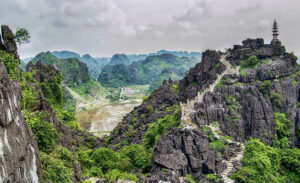
About a 15-minute drive from Trang An, Mua cave tourist area is located right at the foot of the mountain. The entrance fee is 100,000 VND/adult. This is a place that tourists often check-in when visiting Ninh Binh. To reach the top of Mua cave, visitors will have to climb about 500 stone steps, the weather is quite hot so remember to bring water.
From the top of Mua cave, you can see the beautiful panorama of Ninh Binh with winding rivers, rice fields and majestic mountains. Visitors can spend about 2 – 3 hours in the tourist area to visit and take pictures.
Am Tien Cave

A scenic spot belonging to the Hoa Lu ancient capital national relic complex, Am Tien Cave is located in Tay Hoa Lu commune, more than 10 km from the center of Ninh Binh city. The area is surrounded by towering limestone mountains like a citadel, in the middle is a cool blue lake. This place is often commented by tourists as having a poetic beauty but mixed with a bit of sadness and mystery. In the past, the only way to get here was to climb the mountain, so Am Tien was named Tuyet Tinh Coc (meaning “End of love” cave). Today, visitors can go through the mountain via a tunnel, then climb the mountain to visit the temple to burn incense, and admire the cave with magical stalactites. Entrance fee 20,000 VND/person.
Van Long Lagoon

Van Long Lagoon is an artificial lagoon and also the largest wetland nature reserve in the Northern region. Surrounding the lagoon are majestic limestone mountains and many unexplored caves. To visit the pristine natural scenery of Van Long Lagoon, you will sit on a boat, look at the clear water and admire the vast rice fields.
The water is not as blue as the sea, but clear, revealing layers of moss underneath. This is also the place that owns 2 records of the Vietnam Record Book Center in 2010: The living area with the largest number of white-cheeks langurs and the place with the largest natural picture. Entrance fee 20,000 VND/person and boat ticket 60,000VND/2 people.
Van Trinh Grotto
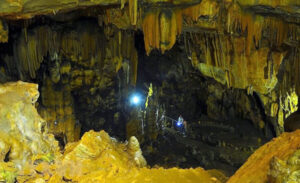
Van Trinh is one of the dozen of grottoes in easily flooded area of Van Long, a beautiful natural site in Thanh Son commune. The grotto is deep inside a 100 meter-high mountain. The entrance of the grotto is approximately 40m from foot. A narrow path leads to the main grotto that is as magnificent as a castle with numerous stone sculptures in different shapes and sizes. natural statues of monks, animals, flowers on the cliffs, ceiling and floor look so lively. They seemed to be petrified by magic. In addition, wells with clean and clod water in the grotto also brings visitors pleasant feelings.
Deep inside the grotto is a small hold with beautiful stalagmites that look like bald cypresses. Sunlight shines through an opening on the celling, creating fanciful scenery.
Cuc Phuong National Park
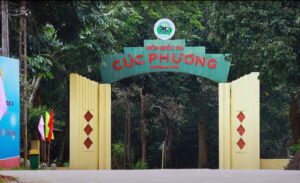 The national park is the border between the three provinces of Ninh Binh, Hoa Binh and Thanh Hoa. This is the first national forest in Vietnam, with an area of about 22,000 hectares, attracting a large number of tourists with diverse types of tourism, from eco-tourism, research, to adventure…
The national park is the border between the three provinces of Ninh Binh, Hoa Binh and Thanh Hoa. This is the first national forest in Vietnam, with an area of about 22,000 hectares, attracting a large number of tourists with diverse types of tourism, from eco-tourism, research, to adventure…
Visitors to Cuc Phuong can explore the primeval forest, caves with strange shapes, caves containing ancient cultural and historical relics such as Trang Khuyet cave, Chua cave, Thuy Tien cave, Nguoi Xua cave… Cuc Phuong National Park also has hot springs, rich flora and fauna, ancient trees thousands of years old…
Thung Nham Bird Garden
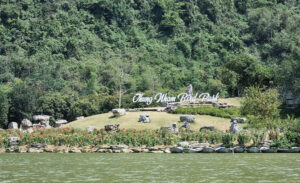
Thung Nham Bird Garden is located in Nam Hoa Lu, home to many species of birds, about 40 species and more than 50,000 birds. The best time to see flocks of birds returning from foraging is around 5 pm.
Coming to Thung Nham, you will admire flocks of birds flying, the wild and peaceful natural beauty. Besides, you can also admire the beautiful scenery of the moving banyan tree, the thousand-year-old Duoi tree, Vai Gioi cave, But cave, Tien Ca cave, Thuy Cung cave, Ba Co cave…
The entrance fee is 100,000 VND/person, the boat ticket to visit the Bird Garden is 20,000 VND/person.
Dich Long Cave

Dich Long cave was found in 1739 in Gia Tran Commune. There is a stone inside that looks like a Buddha statue, then a Buddhist altar was built and in 1740, the cave became a Buddhist pagoda. It shelters statues of Buddha, arhats and a guarding colossus standing on stone pedestals. In particular, there are two beautiful statues carved from one block of blue stone. The grotto has three sub-caves that are linked together, namely, the caves of Buddha, Darkness and Brightness.
The cave gives visitors the feeling of being lost in ta stone world of stalactites which various shapes such as a drinking elephant, a kneeling elephant, a reclining tiger, a dancing phoenix, a drinking dragon and so on. The colours of the stalactites in the cave cahgne with the brightness of the sun. Early in the morning they have a pink colour which turn into twinkling crystal in the midday and then to the red in sunset. It is as if there were ways to heaven and to hell from the cave. Emperor Minh Mang called it “ The third most beautiful cave in Vietnam”
Kenh Ga Hot Water Stream
 The Kenh Ga Hot Water Stream is in Kenh Ga Village, Gia Van Commune. A boat takes the visitors up to the stream among the mountains and the rice fields. Although the fragrant stream has existed for a long time, it was only first studied and exploited by the French in 1940. The mineral water here is extremely high quality and contains chloride-natrium, chloride-kalium, calcium, and magnesium chloride.
The Kenh Ga Hot Water Stream is in Kenh Ga Village, Gia Van Commune. A boat takes the visitors up to the stream among the mountains and the rice fields. Although the fragrant stream has existed for a long time, it was only first studied and exploited by the French in 1940. The mineral water here is extremely high quality and contains chloride-natrium, chloride-kalium, calcium, and magnesium chloride.
The water is clear and has a stable temperature of 53 degrees Celsius with a source capacity of 5,000 cubic meters per hour. Ninh Binh is lucky to have this natural hot water stream used for relaxation and self treatment.
Xuan Thuy National Park
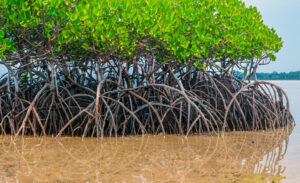 Giao Minh commune is the ideal location to observe a submerged land environment. This area between Lu and Ngan islets at the mouth of the Red River is the product of ta millennial alluvial process.
Giao Minh commune is the ideal location to observe a submerged land environment. This area between Lu and Ngan islets at the mouth of the Red River is the product of ta millennial alluvial process.
Vietnam has chosen Lu-Ngan islets to be inscribed on the list of international ecological zones to be protected and preserved and this has become Xuan Thuy Ramsar Reserve. The alluvial plain of Lu-Ngan islets has also been chosen by the Vietnamese Government to be included on the list of the National Natural Conservancy Zone.
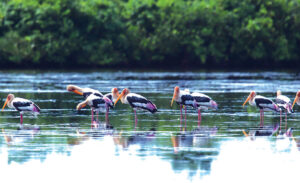 Recently, Xuan Thuy Ramsar Reserve has been become National Park. The park covers an area of 15,000ha of which 7,100ha to be strictly preservation. Forest covers about 90% of the 7,100 ha site which comprises 4,000ha of wetland, home to a rich fauna and flora system embracing 57 breeds and 111 known species of water plants.
Recently, Xuan Thuy Ramsar Reserve has been become National Park. The park covers an area of 15,000ha of which 7,100ha to be strictly preservation. Forest covers about 90% of the 7,100 ha site which comprises 4,000ha of wetland, home to a rich fauna and flora system embracing 57 breeds and 111 known species of water plants.
 Xuan Thuy National Park is known for its many bird varieties. There are 215 species including 160 types of migrating birds and 50 types of water birds, according to the latest survey carried out by International Bird Life. Nine of these species, including the black-faced spoonbill and the northern white egret are listed in the world’s Red Book of rare animals. The black-faced spoonbills found in the reserve account for one fifth of the bird’s world community.
Xuan Thuy National Park is known for its many bird varieties. There are 215 species including 160 types of migrating birds and 50 types of water birds, according to the latest survey carried out by International Bird Life. Nine of these species, including the black-faced spoonbill and the northern white egret are listed in the world’s Red Book of rare animals. The black-faced spoonbills found in the reserve account for one fifth of the bird’s world community.
Benthos is also plentiful in Xuan Thuy Ramsar. Fish, shrimps and crabs provide the main income of the local community. From November to April, it is a meeting place for tens of thousands of birds migrating from the north.
Kem Trong
 Kem Trong is a national scenic spot recognized in 1962. Kem Trong is where the Day River flows through two mountains, on the left is Rua Mountain, Co Dong Mountain in Ha Nam Province; on the right is Bai Tho Mountain, Bat Gia Mountain range in Ninh Binh Province. The natural landscape here is not as vast and majestic as many other natural landscapes. Kem Trong is a scenic spot that includes both rivers and mountains, fields and trees, the scenery of the earth and sky, of human creation have merged together to form a complete complex.
Kem Trong is a national scenic spot recognized in 1962. Kem Trong is where the Day River flows through two mountains, on the left is Rua Mountain, Co Dong Mountain in Ha Nam Province; on the right is Bai Tho Mountain, Bat Gia Mountain range in Ninh Binh Province. The natural landscape here is not as vast and majestic as many other natural landscapes. Kem Trong is a scenic spot that includes both rivers and mountains, fields and trees, the scenery of the earth and sky, of human creation have merged together to form a complete complex.
In addition, when coming to Kem Trong, you can visit some beautiful places such as: Bong Mountain, Vong Mountain, Dragon Mountain on the right bank. On the other side of the Day River, there are Rua Mountain, Co Dong Mountain, Trinh Tiet Mountain… On Trinh Tiet Mountain there is an ancient pagoda. The people here believe that the pagoda gathers the spiritual energy of heaven and earth.
Sacred temples and pagodas
Bai Dinh Pagoda
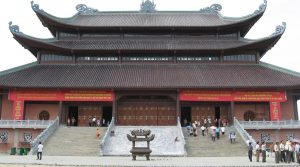
The Bai Dinh Pagoda complex was built in 2003, covering an area of over 500 hectares, surrounded by majestic limestone mountain ranges. The pagoda is divided into 2 areas: Tan Tu and Co Tu. Here, visitors can walk around or travel by electric car (price 30,000 VND/person/trip). Some of the shrines that visitors often visit when coming here are Phap Chu (consisting of 5 rooms, the middle room has a 10m high, 100-ton Buddha statue), Tam The shrine… or you can go up the bell tower to admire the Great Bell weighing 36 tons.
Not only is it an impressive architectural work, Bai Dinh Pagoda is also a pilgrimage site to the land of Buddha and a sacred place where many people come to pray for peace and worship Buddha.
Phat Diem Cathedral
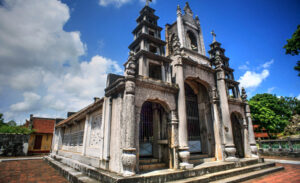 Phat Diem Cathedral complex is located in Phat Diem commune, 130 km from south of Hanoi or 30 km from Hoa Lu ward. It was built between 1875 and 1899 by priest Father Tran Luc. It’s an ensemble of construction in Oriental architectural style. They are divided into 2 sections: the worshipping section and the section for residence and teaching of religious doctrines.
Phat Diem Cathedral complex is located in Phat Diem commune, 130 km from south of Hanoi or 30 km from Hoa Lu ward. It was built between 1875 and 1899 by priest Father Tran Luc. It’s an ensemble of construction in Oriental architectural style. They are divided into 2 sections: the worshipping section and the section for residence and teaching of religious doctrines.
The complex area includes ponds, monuments, Phuong Dinh (bell tower), Square Hall, chapels, artificial caves, …. The highlight of the architecture of Phat Diem stone Cathedral is the harmonious combination of Eastern and Western architecture. Phat Diem cathedral complex includes a large church and 5 small churches. One of them is built entirely of natural stone, called the stone church, Phuong dinh (bell tower); pond and 3 artificial grottoes. In 1988, the architectural complex of Phat Diem Cathedral was ranked as a National Historical and Cultural Relic.
Pho Minh Pagoda
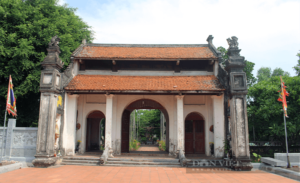 Pho Minh Pagoda is the only architectural work of the ancient Thien Truong Palace that still remains almost intact to this day. According to the Department of Culture, Sports and Tourism of Nam Dinh, the pagoda dates back to the Ly Dynasty, expanded in 1262, and served the Buddhist worshiping needs of the emperor and the noble princes of the Tran Dynasty. In addition to worshiping Buddha, the pagoda has a statue of Emperor Tran Nhan Tong, Huyen Quang and Pho Loa – the founders of the Truc Lam Yen Tu sect.
Pho Minh Pagoda is the only architectural work of the ancient Thien Truong Palace that still remains almost intact to this day. According to the Department of Culture, Sports and Tourism of Nam Dinh, the pagoda dates back to the Ly Dynasty, expanded in 1262, and served the Buddhist worshiping needs of the emperor and the noble princes of the Tran Dynasty. In addition to worshiping Buddha, the pagoda has a statue of Emperor Tran Nhan Tong, Huyen Quang and Pho Loa – the founders of the Truc Lam Yen Tu sect.
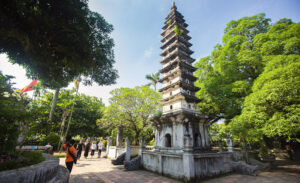 In the pagoda grounds is Pho Minh Tower, which was built in 1305. This is one of the oldest towers in Vietnam with an architecture consisting of 14 floors, up to 20m high, look like a three-level lotus flower. The pedestal and the first level are constructed of engraved grey stone while the other levels are built of brick. On the top of the conical shaped tower is a stone in the form of a pen. Although the tower weighs some 700 tons, it has surprisingly stood steady on sunken land for over seven centuries.
In the pagoda grounds is Pho Minh Tower, which was built in 1305. This is one of the oldest towers in Vietnam with an architecture consisting of 14 floors, up to 20m high, look like a three-level lotus flower. The pedestal and the first level are constructed of engraved grey stone while the other levels are built of brick. On the top of the conical shaped tower is a stone in the form of a pen. Although the tower weighs some 700 tons, it has surprisingly stood steady on sunken land for over seven centuries.
Out of the 100 original statues in the pagoda only 50 remain but these still significantly convey the impressive original artistic style.
Phu Day remains
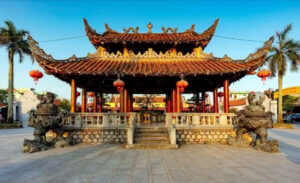 Located in Vu Ban Commune, Phu Day remains are dedicated to Goddess Lieu Hanh, one of the four immortal Gods of Vietnam (the others are Van Vien, Dong and Chu Dong Tu). Visitors come to Phu Day not only to sightsee but also with the hope of being blessed with good luck and peace.
Located in Vu Ban Commune, Phu Day remains are dedicated to Goddess Lieu Hanh, one of the four immortal Gods of Vietnam (the others are Van Vien, Dong and Chu Dong Tu). Visitors come to Phu Day not only to sightsee but also with the hope of being blessed with good luck and peace.
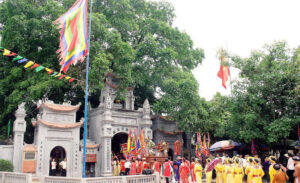 The Phu Day site includes three main areas: Tien Huong Residence, Van Cat residence and the tomb of Goddess Lieu. These monuments are highly valued for their architecture dating from the end of 19th century and early 20th century.
The Phu Day site includes three main areas: Tien Huong Residence, Van Cat residence and the tomb of Goddess Lieu. These monuments are highly valued for their architecture dating from the end of 19th century and early 20th century.
Every year, Phu Day Festival is held annually on the 3rd day of the 3rd lunar month, to express gratitude to Goddess Lieu Hanh, attracting the participation of a large number of people and visitors from all over the country.
Co Le Pagoda
 Co Le Pagoda, located in Co Le commune, is one of the famous scenic spots, a special national historical and cultural relic of the Red River Delta. The pagoda was built during the Ly Than Ton period (12th century) on a square plot of land, nearly 36,000m² wide, with a beautiful landscape, surrounded by small rivers and lakes. Co Le Pagoda is a fusion of traditional Vietnamese architectural elements with European Gothic architectural elements. This is a Buddhist pagoda but has the appearance of a Catholic cathedral.
Co Le Pagoda, located in Co Le commune, is one of the famous scenic spots, a special national historical and cultural relic of the Red River Delta. The pagoda was built during the Ly Than Ton period (12th century) on a square plot of land, nearly 36,000m² wide, with a beautiful landscape, surrounded by small rivers and lakes. Co Le Pagoda is a fusion of traditional Vietnamese architectural elements with European Gothic architectural elements. This is a Buddhist pagoda but has the appearance of a Catholic cathedral.
The Cuu Pham Lien Hoa Tower, placed on the back of a giant turtle, 32m high, made up of 9 lotus floors, built in 1927, is a prominent highlight of the pagoda. In the lake in front of the main hall, there is currently a special “treasure”, which is the Dai Hong Chung bell weighing 9 tons. This bell was cast in 1936, 4.2m high, 2.2m in diameter.
With its typical values, Co Le Pagoda was ranked as an architectural and artistic relic by the Ministry of Culture, Sports and Tourism in 1988.
Hung Nghia Church
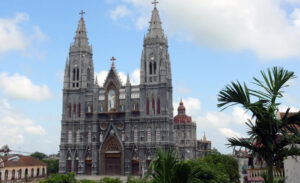 Hung Nghia Church is located in Hai Hung commune, was built in 1927. This is one of the most beautiful churches in Vietnam with ancient Spanish and French Gothic architecture. This is a check-in place that cannot be missed by tourists in Nam Dinh tourist area.
Hung Nghia Church is located in Hai Hung commune, was built in 1927. This is one of the most beautiful churches in Vietnam with ancient Spanish and French Gothic architecture. This is a check-in place that cannot be missed by tourists in Nam Dinh tourist area.
Standing from afar, Hung Nghia Church possesses a mysterious beauty like an ancient castle in the West with eye-catching gray tones and sophisticated architectural details. If you are a fan of “virtual life”, this is an ideal place for you to have unique artistic photos.
Ba Danh Pagoda
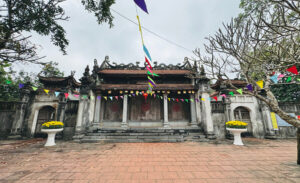 Ba Danh Pagoda, also known as Bao Son Tu, is located next to the poetic Ngoc mountain, Kim Bang ward. It is situated on the bank of the Day river in a large peaceful area from any urban settlement. To reach the pagoda, take a small boat across the river.
Ba Danh Pagoda, also known as Bao Son Tu, is located next to the poetic Ngoc mountain, Kim Bang ward. It is situated on the bank of the Day river in a large peaceful area from any urban settlement. To reach the pagoda, take a small boat across the river.
At first, Ba Danh pagoda was just a small temple for worshiping Saint Tu Phap. Then, during reign of Emperor Le Huy Tong (1675-1705), the pagoda was renovated and embellished. Later, locals tore down the temple, brought a statue of Buddha to the site and built the Ba Danh Pagoda. After offering incense at the pagoda, visitor scan continue on to Ngoc Mountain and its lush green forests.
Tran Thuong Temple
 The temple is located on the banks of the Red River, in Tran Thuong commune. From Hoa Lu ward, the center of Ninh Binh province to Tran Thuong temple is 50 km. Tran Thuong Temple is a temple to worship Tran Hung Dao, built on the land he used as a granary to serve the resistance war against the Yuan-Mongol army for the second time (1285).
The temple is located on the banks of the Red River, in Tran Thuong commune. From Hoa Lu ward, the center of Ninh Binh province to Tran Thuong temple is 50 km. Tran Thuong Temple is a temple to worship Tran Hung Dao, built on the land he used as a granary to serve the resistance war against the Yuan-Mongol army for the second time (1285).
The temple has a unique architecture in the ancient art style of the Vietnamese people; decorated with elaborately carved motifs combining many techniques of ancient people.
 Tran Thuong Temple was built on a large, isolated plot of land. The space of the temple is limited by a system of walls built of solid bricks plastered with mortar combined with canals and lakes. Tran Thuong Temple currently preserves more than 200 beautiful relics, antiques, and worship objects of high artistic value, rich in genres, and diverse in materials.
Tran Thuong Temple was built on a large, isolated plot of land. The space of the temple is limited by a system of walls built of solid bricks plastered with mortar combined with canals and lakes. Tran Thuong Temple currently preserves more than 200 beautiful relics, antiques, and worship objects of high artistic value, rich in genres, and diverse in materials.
Tran Thuong Temple Festival is held on the 15th day of the first lunar month and the 20th day of the eighth lunar month every year. It is one of the three largest regional festivals in Ninh Binh province.
Tam Chuc Pagoda
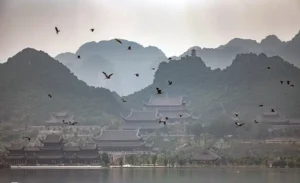 Tam Chuc is the largest pagoda in Vietnam, located in Ba Sao town and Tam Chuc commune. The pagoda is about 60 km from the center of Hanoi and is one of the most attractive spiritual tourist destinations in the country, connecting Huong Pagoda tourist area, Bai Dinh tourist area and Van Long nature reserve. The Sutra Pillar Garden is a restored Sutra Pillar similar to the national treasure Sutra Pillar of Nhat Tru Pagoda, the ancient capital of Hoa Lu, Ninh Binh. There are currently 32 Sutra Pillars 13.5 m high, about 2 m wide, weighing about 200 tons.
Tam Chuc is the largest pagoda in Vietnam, located in Ba Sao town and Tam Chuc commune. The pagoda is about 60 km from the center of Hanoi and is one of the most attractive spiritual tourist destinations in the country, connecting Huong Pagoda tourist area, Bai Dinh tourist area and Van Long nature reserve. The Sutra Pillar Garden is a restored Sutra Pillar similar to the national treasure Sutra Pillar of Nhat Tru Pagoda, the ancient capital of Hoa Lu, Ninh Binh. There are currently 32 Sutra Pillars 13.5 m high, about 2 m wide, weighing about 200 tons.
 Tam The Palace is 39 m high, with a floor area of 5,400 m², enough for 5,000 Buddhists to worship at the same time. In the palace are placed 3 bronze Buddha statues symbolizing “Past, present, future”. Each statue weighs more than 200 tons, behind each statue is a gilded Bodhi leaf.
Tam The Palace is 39 m high, with a floor area of 5,400 m², enough for 5,000 Buddhists to worship at the same time. In the palace are placed 3 bronze Buddha statues symbolizing “Past, present, future”. Each statue weighs more than 200 tons, behind each statue is a gilded Bodhi leaf.
The Jade Pagoda on the top of That Tinh Mountain is made entirely of red granite, inside is a statue of Buddha made of ruby weighing 4,000 kg. To reach the pagoda, visitors must climb 299 stone steps. From here, you can see the whole view of Tam Chuc Pagoda. In addition, visitors can visit the Quan The Am Bodhisattva Palace, where the 100-ton bronze Buddha statue is located, or the Phap Chu Palace with a 150-ton bronze statue. Other attractions are Tam Chuc communal house and Luc Nhac lake area.
Craft villages
Bach Long Salt Field
 From March to August every year, if you travel to Nam Dinh, don’t forget to visit Bach Long salt field to admire the beauty of this place during the salt making season! Salt making is a hard traditional profession in Nam Dinh ward. To have pure white salt grains, famers have to wake up early in the morning. Salt is only delicious and white when dried under the harsh sunlight.
From March to August every year, if you travel to Nam Dinh, don’t forget to visit Bach Long salt field to admire the beauty of this place during the salt making season! Salt making is a hard traditional profession in Nam Dinh ward. To have pure white salt grains, famers have to wake up early in the morning. Salt is only delicious and white when dried under the harsh sunlight.
For many professions, strong sunlight is the cruelty of nature, but for the salt industry, strong sunlight is a precious gift from heaven and earth, because the stronger the sunlight, the easier it is for the salt to crystallize, making salt harvest season is more bountiful. Coming to Bach Long salt fields, you will see vast salt fields, but the mounds of pure white finished salt, and boats carrying salt back to the warehouse in the sunset with a little sunlight.
Doi Tam Drum- Making village
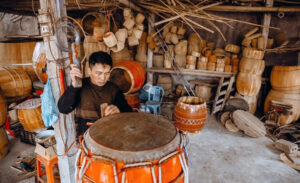 This craft village is located at the foot of Doi Mountain in Tien Son ward. Legend has it that the founder of this craft was Nguyen Duc Nang. In the 10th century, he together with his brother, chose this place to settle and handed down the drum-making craft to their villagers. After Nguyen Duc Nang died, the villagers buried him at the foot of the mountain and honored him “Trang Sam” (Master of Thunder) in his memory. On the occasions of the Vietnamese Lunar New Year, and traditional festivals.
This craft village is located at the foot of Doi Mountain in Tien Son ward. Legend has it that the founder of this craft was Nguyen Duc Nang. In the 10th century, he together with his brother, chose this place to settle and handed down the drum-making craft to their villagers. After Nguyen Duc Nang died, the villagers buried him at the foot of the mountain and honored him “Trang Sam” (Master of Thunder) in his memory. On the occasions of the Vietnamese Lunar New Year, and traditional festivals.
Doi Tem residents come to visit the founder’s grave and burn incense to pay homage to him. Drum of Doi Tem Village have been well known throughout the country. These drums looks simple but produce very beautiful sounds that seem to express that feelings of happiness and sadness of the makers. Visiting the village, you will have opportunities to study the secret of this craft.
Vu Dai Village Braised Fish
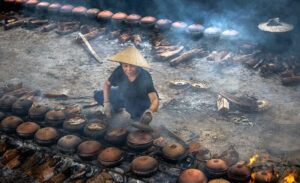 Vu Dai Braised Fish is known as the most famous Ha Nam (currently Ninh Binh province) specialty because of the quality of the raw materials combined with the elaborate processing steps. A pot of braised fish must be boiled continuously for 14 hours, when it is dry, add water and the heat must not be too high, otherwise the fish will burn. The fish chosen to be dried are black carp weighing from 4 to 6 kg or more, raised naturally or purchased for braised fish.
Vu Dai Braised Fish is known as the most famous Ha Nam (currently Ninh Binh province) specialty because of the quality of the raw materials combined with the elaborate processing steps. A pot of braised fish must be boiled continuously for 14 hours, when it is dry, add water and the heat must not be too high, otherwise the fish will burn. The fish chosen to be dried are black carp weighing from 4 to 6 kg or more, raised naturally or purchased for braised fish.
In addition to fresh salted fish, the braised pot also contains pork belly and other typical country spices. A standard pot of fish has firm meat, soft bones, spices mixed into each piece of fish, when eaten it has a rich, spicy and sweet taste, not salty.
Ninh Binh specialties
Coming to Ninh Binh, you cannot miss the specialties of burnt rice, raw goat meat with lemon, stir-fried goat, grilled goat, crab fried with betel leaves, eel salad…
Goat meat dishes
 Dishes made from goat meat are quite famous and are dishes that you should not miss when traveling to Ninh Binh. Goat meat is a dish that many tourists love when coming here. Goat in Ninh Binh is raised on rocky mountains so the meat is firm and chewy. Fresh and delicious Ninh Binh goat meat is processed according to many different recipes, making the dishes here quite special and tastier than in other places.
Dishes made from goat meat are quite famous and are dishes that you should not miss when traveling to Ninh Binh. Goat meat is a dish that many tourists love when coming here. Goat in Ninh Binh is raised on rocky mountains so the meat is firm and chewy. Fresh and delicious Ninh Binh goat meat is processed according to many different recipes, making the dishes here quite special and tastier than in other places.
To find reputable restaurants with standard mountain goat, diners should go to mountainous areas such as Hoa Lu, around Trang An eco-tourism area, Tam Coc… Each portion of goat meat costs 100,000 – 250,000 VND depending on the preparation method.
Fish salad
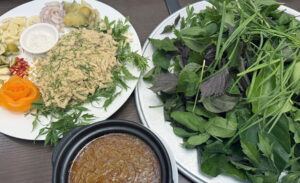 Fish salad is a special dish of Ninh Binh and is processed quite elaborately with the rich flavor of many spices. Although made from fish, the salad does not have a fishy smell, stimulates the taste buds and makes diners miss it.
Fish salad is a special dish of Ninh Binh and is processed quite elaborately with the rich flavor of many spices. Although made from fish, the salad does not have a fishy smell, stimulates the taste buds and makes diners miss it.
This is a catfish, legless and finless. At first glance, they look quite similar to eels but are larger in size, with slippery skin, and a light brown back and belly.
In the past, locals often squeezed them with lime juice, then squeezed dry and mixed well with rice bran to make salad. Later, fish salad was mixed with spices, adding finely ground galangal, thinly sliced lemongrass and rice bran separately.
In addition to the dipping sauce, the ingredients to eat with eel salad are also elaborately prepared, including dozens of different types of aromatic leaves. Depending on each person’s taste and the culture of each region, people can eat salad with leaves such as: fig leaves, guava leaves, Indian laurel leaves, perilla leaves, basil, coriander, ginseng, pennywort, mint, green banana,…
Stir-fried field crab with betel leaves
 Stir-fried field crabs with betel leaves, a rustic and popular dish in Ninh Binh, has a strong countryside flavor that visitors should try when visiting the ancient capital. The field crabs are carefully prepared, the betel leaves are washed and sliced, then these two main ingredients are stir-fried together according to a certain recipe.
Stir-fried field crabs with betel leaves, a rustic and popular dish in Ninh Binh, has a strong countryside flavor that visitors should try when visiting the ancient capital. The field crabs are carefully prepared, the betel leaves are washed and sliced, then these two main ingredients are stir-fried together according to a certain recipe.
Because they do not use farmed crabs, this dish brings many unexpected feelings to diners. It is the crunchy taste of field crabs combined with the characteristic aroma of betel leaves. This dish is best when combined with hot rice.
Mountain snails
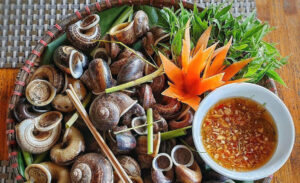 Mountain snails are a famous specialty in Ninh Binh because of their natural sweetness and rich flavor due to the snails eating leaves, grass, and some precious medicinal herbs. Therefore, mountain snails are processed into many different dishes such as grilled, stir-fried with tamarind or stir-fried with garlic,… but the most popular is still boiled mountain snails.
Mountain snails are a famous specialty in Ninh Binh because of their natural sweetness and rich flavor due to the snails eating leaves, grass, and some precious medicinal herbs. Therefore, mountain snails are processed into many different dishes such as grilled, stir-fried with tamarind or stir-fried with garlic,… but the most popular is still boiled mountain snails.
After being caught, mountain snails are washed and boiled with lemongrass. It’s just that simple, but this rustic delicacy attracts many people. Diners can eat it alone to feel the natural sweetness of the snails or dip it in fish sauce with lemon and chili.
Pho
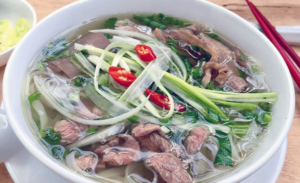 Mentioning Nam Dinh (currently is Ninh Binh Province) is mentioning the famous noodle soup – pho. “Pho Hometown” is located in Giao Cu village, Nam Dong commune, 14 km from Nam Dinh ward. This is a long-standing pho noodle making village.
Mentioning Nam Dinh (currently is Ninh Binh Province) is mentioning the famous noodle soup – pho. “Pho Hometown” is located in Giao Cu village, Nam Dong commune, 14 km from Nam Dinh ward. This is a long-standing pho noodle making village.
The raw material is the previous crop’s rice, which is ground with a stone mill and then spread thinly on a pot of water fanned by charcoal. The pho noodles here are white, chewy and fragrant. The pho broth is simmered from beef bones, delicious fish sauce and sea worms, dried onions…
Pho Xiu
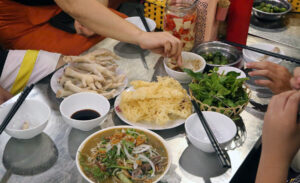 Pho xiu is also a suggestion worth trying. Xiu is a shortened way of reading “char siu” in Chinese cuisine, the pork has a thin layer of fat around it, is marinated with basil, five-spice powder, local wine, annatto oil… then fried. Char siu has a cockroach brown color, the fat is yellow, fragrant with basil, when sliced, the tenderloin inside is light pink, the meat is soft and sweet.
Pho xiu is also a suggestion worth trying. Xiu is a shortened way of reading “char siu” in Chinese cuisine, the pork has a thin layer of fat around it, is marinated with basil, five-spice powder, local wine, annatto oil… then fried. Char siu has a cockroach brown color, the fat is yellow, fragrant with basil, when sliced, the tenderloin inside is light pink, the meat is soft and sweet.
The pho xiu broth is also simmered with beef bones and pork bones in a certain ratio. The pieces of pork are cut into large pieces like cooked beef. At first glance, if you don’t pay attention to the red color of the pork, many people will think this is a bowl of beef pho.
Xiu Pao Cake
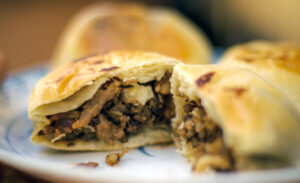 Xiu Pao cake has followed the Chinese to Nam Dinh for a long time. The cake is simple, looks like a fried dumpling but the filling is like a baked cake and the outer shell is like Soc Trang pia cake. The main ingredients to make the cake include meat, eggs, flour, lard and some typical spices depending on the traditional recipe.
Xiu Pao cake has followed the Chinese to Nam Dinh for a long time. The cake is simple, looks like a fried dumpling but the filling is like a baked cake and the outer shell is like Soc Trang pia cake. The main ingredients to make the cake include meat, eggs, flour, lard and some typical spices depending on the traditional recipe.
To make the cake delicious, people often marinate pork loin with minced garlic, five-spice powder, oyster sauce, honey and then fry until it turns brown and fragrant.
Hai Hau longan cake
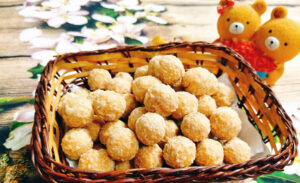 Hai Hau longan cake makes many people mistakenly think it is made from longan fruit, but it is not. Because of its round shape and delicious yellow color like longan, local people creatively named it that way. A popular snack, longan cake is made from sticky rice flour, chicken eggs, sugar, and lard.
Hai Hau longan cake makes many people mistakenly think it is made from longan fruit, but it is not. Because of its round shape and delicious yellow color like longan, local people creatively named it that way. A popular snack, longan cake is made from sticky rice flour, chicken eggs, sugar, and lard.
After mixing the sticky rice flour with chicken eggs, it is rolled into balls and fried in a pan full of oil. Melt the white sugar, add the fried dough to coat the outside with sugar. The deliciousness and sweetness of the cake depends a lot on this layer of sugar.
Phu Ly Rice Rolls
 Phu Ly Rice Rolls are the most famous specialty of Ha Nam. Rice rolls here are made from delicious and high-quality Tam Xoan rice. After being soaked in water for 3-4 hours, Tam Xoan rice is ground into a watery powder and then spread on a steamer. The rice rolls are spread with moderate thinness, crispy and are vegetarian, without meat or wood ear mushrooms. Standing out on the white cake are layers of golden, fragrant fried onions, with a few drops of fat to increase the richness of the cake.
Phu Ly Rice Rolls are the most famous specialty of Ha Nam. Rice rolls here are made from delicious and high-quality Tam Xoan rice. After being soaked in water for 3-4 hours, Tam Xoan rice is ground into a watery powder and then spread on a steamer. The rice rolls are spread with moderate thinness, crispy and are vegetarian, without meat or wood ear mushrooms. Standing out on the white cake are layers of golden, fragrant fried onions, with a few drops of fat to increase the richness of the cake.
Diners eat it with sweet and sour fish sauce, with pickles made from kohlrabi, carrots and grilled meat seasoned to taste. The grilled meat is not too dry, not too fatty but fragrant, soft and sweet. Many tourists think that Phu Ly rice rolls are a combination of Thanh Tri rice rolls and Hanoi vermicelli with grilled pork. The dish has a unique flavor, making it different from other types of rice rolls in the country.
Voc Long wine
The winemakers in Voc village are always loyal to a recipe for distilling wine. That is, they cook it with delicious specialty rice and ferment it with Vietnamese yeast consisting of 36 traditional Chinese herbs. From the time of fermenting, they have to wait 2 to 3 days for the yeast to rise before opening it. The rice wine is also cooked just right, not too dry or too mushy, beaten and cooled before sprinkling yeast, then put in a ceramic jar to ferment for 48 hours, when it is plump, then add water, after 2 nights then cook it into wine. A jar costs from 120,000 VND.
Hopefully the Vietdreamtravel guide has just provided above will be useful suggestions for your trip of explore Ninh Binh!
Source: collected by An
Follow us for the best deal with Vietnam package tours and visa services!
